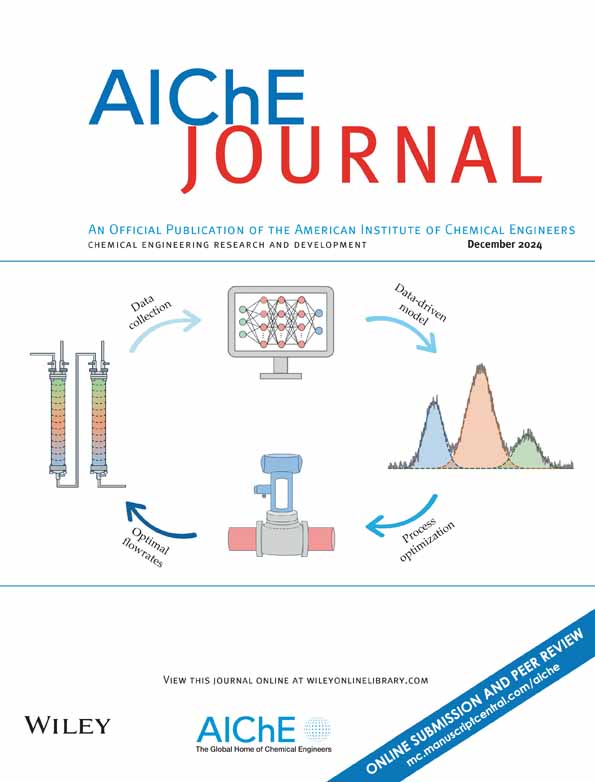Mo‐based ionic liquid as dispersive precursor for effective hydrodeoxygenation of stearic acid: Mechanism and kinetics
IF 3.5
3区 工程技术
Q2 ENGINEERING, CHEMICAL
引用次数: 0
Abstract
In the present work, the selective hydrodeoxygenation (HDO) performance of stearic acid over以莫基离子液体为分散前驱体,实现硬脂酸的有效加氢脱氧:机理和动力学
在本研究中,对利用各种钼前驱体生产的原位 MoS2 催化剂对硬脂酸进行选择性加氢脱氧(HDO)的性能进行了评估。值得注意的是,由[N8881]2MoO4--一种具有油溶性的钼基离子液体(IL)--生成的原位 MoS2 催化剂在 300°C、8 兆帕、6 小时的条件下,硬脂酸转化率高达 99.9%,HDO 产物十八烷的产率为 97.5%。对原位 MoS2 催化剂进行了全面的表征和分析,以阐明实验结果。此外,还根据产物分布提出了硬脂酸的反应途径,并计算和讨论了相对动力学参数。结果表明,应用 Mo 基 IL 作为前驱体生成原位 MoS2 催化剂用于生物脂类的选择性 HDO 是非常有趣和理想的。
本文章由计算机程序翻译,如有差异,请以英文原文为准。
求助全文
约1分钟内获得全文
求助全文
来源期刊

AIChE Journal
工程技术-工程:化工
CiteScore
7.10
自引率
10.80%
发文量
411
审稿时长
3.6 months
期刊介绍:
The AIChE Journal is the premier research monthly in chemical engineering and related fields. This peer-reviewed and broad-based journal reports on the most important and latest technological advances in core areas of chemical engineering as well as in other relevant engineering disciplines. To keep abreast with the progressive outlook of the profession, the Journal has been expanding the scope of its editorial contents to include such fast developing areas as biotechnology, electrochemical engineering, and environmental engineering.
The AIChE Journal is indeed the global communications vehicle for the world-renowned researchers to exchange top-notch research findings with one another. Subscribing to the AIChE Journal is like having immediate access to nine topical journals in the field.
Articles are categorized according to the following topical areas:
Biomolecular Engineering, Bioengineering, Biochemicals, Biofuels, and Food
Inorganic Materials: Synthesis and Processing
Particle Technology and Fluidization
Process Systems Engineering
Reaction Engineering, Kinetics and Catalysis
Separations: Materials, Devices and Processes
Soft Materials: Synthesis, Processing and Products
Thermodynamics and Molecular-Scale Phenomena
Transport Phenomena and Fluid Mechanics.
 求助内容:
求助内容: 应助结果提醒方式:
应助结果提醒方式:


